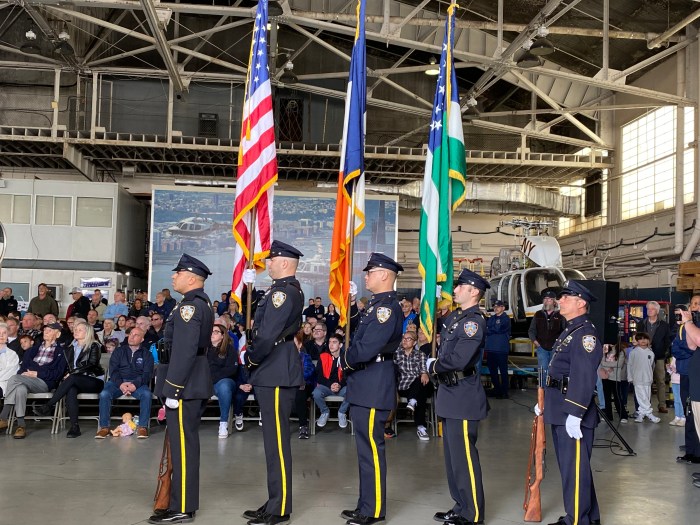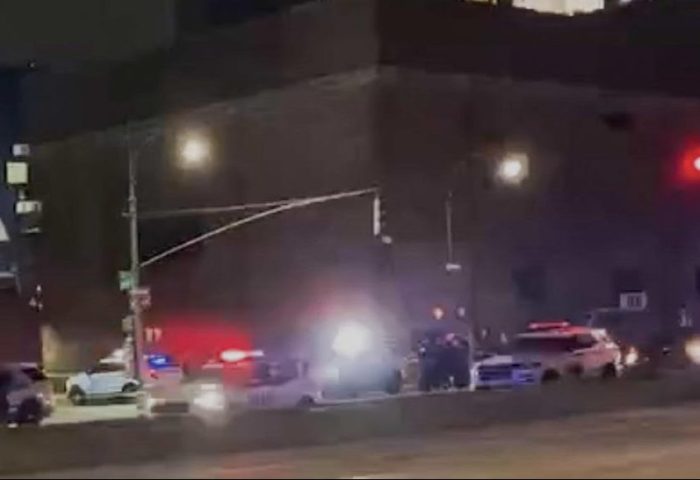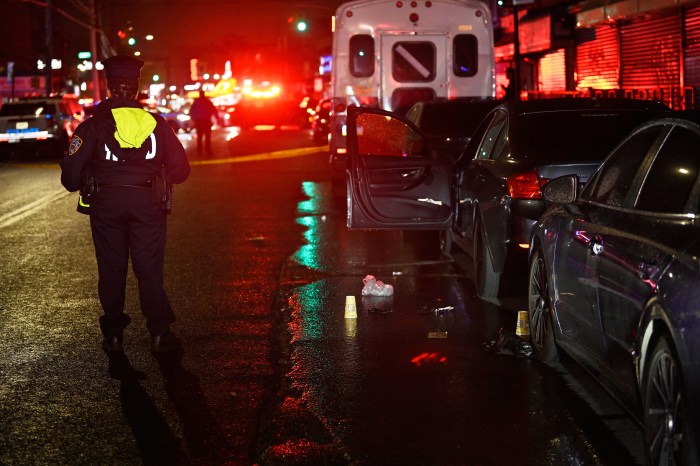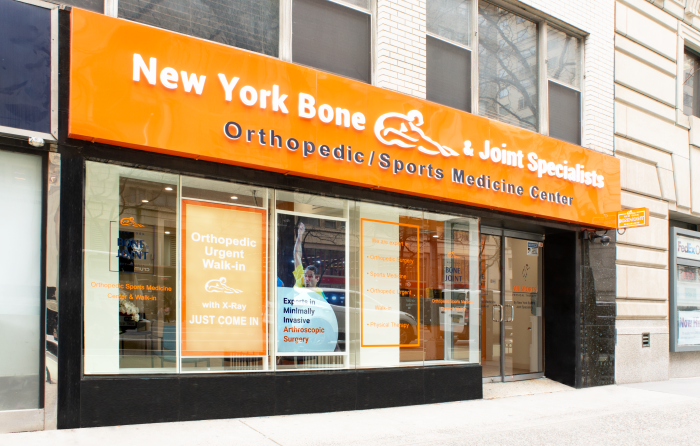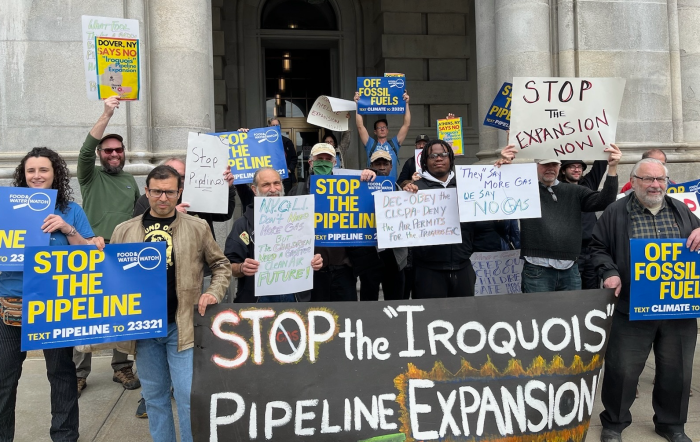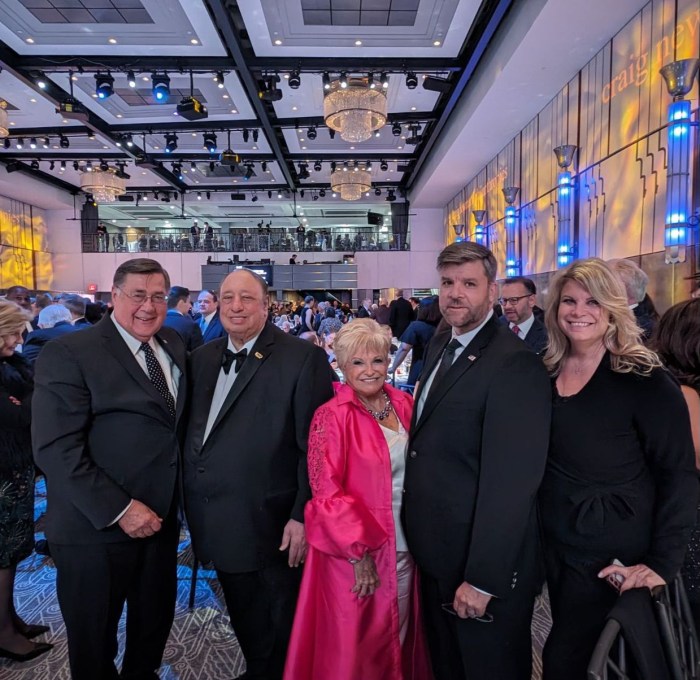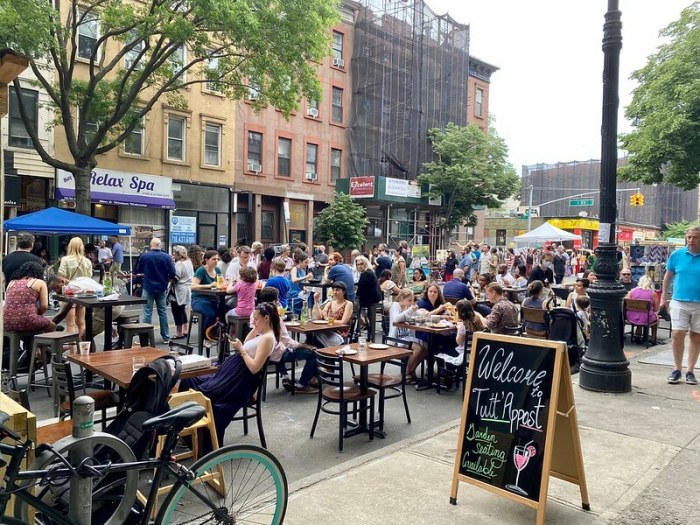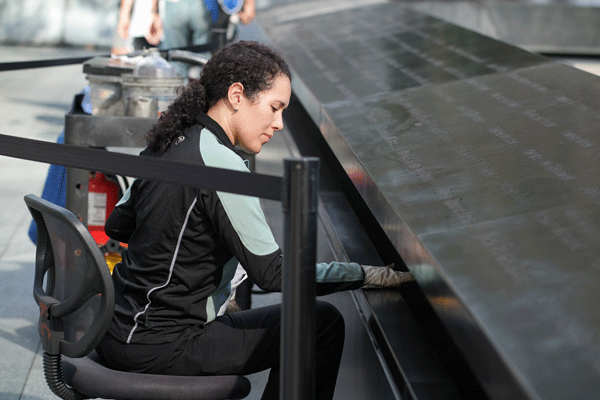
A visitor to the 9/11 Memorial this week.
BY JOSH ROGERS | The funny thing is the inevitable World Trade Center briefings every September didn’t seem much different this year.
The optimism was the same, so was the mutual admiration, the congratulations, and all of the talk of working well together.
The difference this year is there was much more truth to many of the proclamations.
For the first time since the 2001 attack, part of the 16-acre site is open to the public, thanks to the opening of the 9/11 Museum in May. Yes, the memorial plaza opened three years ago, but the ticketing system denied strolling residents, commuters and the wandering tourist access to the site.
For better or worse — and some nearby residents say things have recently gotten worse — a large part of the site is now open.
“It is no longer a plan for the future, it’s a real place,” architect Daniel Libeskind, who developed the site plan, said Tuesday at a briefing in 4 World Trade Center.
Libeskind, a Downtown resident who definitely doesn’t agree with some of his naysaying neighbors, said he walks through the memorial almost every day to get from his home to his office.
But surprisingly, even with the addition of roughly eight acres of public space, the crowds and congestion have increased.
Some of that is due to the opening of the museum, which has drawn nearly one million people in its first four months.
But much of the crowd problems are because of a tight chokehold on the site’s access points.
The Port Authority, which owns much of the site, promised a little bit of relief Monday night at a Community Board 1 briefing.
Regarding the mass competition for space on Vesey St. between PATH commuters, subway riders and residents — the “Vesey Squeezey,” as this paper has dubbed it — the Port’s Glen Guzi said there will be a little more room on the sidewalk probably in about four weeks or so, when space opens up near the Post Office building across the street.
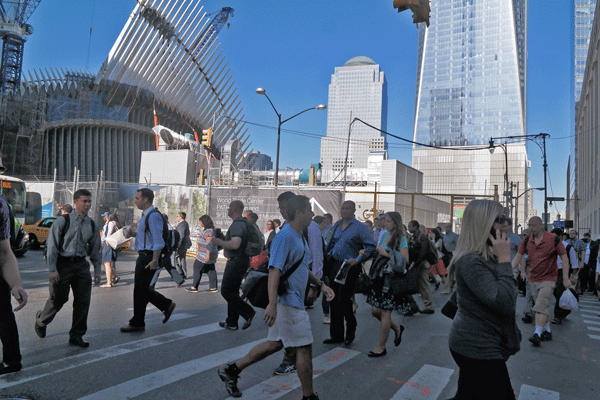
But the usually affable and accommodating Guzi did not offer resident Mary Perillo any hope about opening up Greenwich St. to pedestrians soon.
“The quick answer is no,” Guzzi told her at the meeting, saying there is too much nearby construction to allow the street to open soon.
Afterwards, a disappointed Perillo said even though you had to walk up stairs to cross the W.T.C. at Greenwich before 9/11, it was still a well-used walkway.
“We all went up the stairway to get through it,” she told me. “It would be nice if 11.5 million tourists had somewhere to go.”
Scott Rechler, the Port’s vice chairperson, said at the Tuesday briefing that they always look to open things early, but Greenwich St. would be difficult before the opening of the permanent transportation hub, expected by the end of next year.
At least a few observers were scratching their heads at the resistance to opening the north-south path though the site, and one with knowledge of the area told me it “absolutely” could open very soon.
 But elsewhere, the progress at the site is real. Although office workers have not set up shop yet at 4 W.T.C., the building had its own “opening” ceremony almost a year ago, and has staged private events for quite some time, including the W.T.C. briefing on Tues., Sept. 9.
But elsewhere, the progress at the site is real. Although office workers have not set up shop yet at 4 W.T.C., the building had its own “opening” ceremony almost a year ago, and has staged private events for quite some time, including the W.T.C. briefing on Tues., Sept. 9.
Developer Larry Silverstein, who is building Nos. 4, 3 (estimated 2018 opening) and someday perhaps 2 W.T.C., said, “Of course we all wish we had gotten it done a lot faster but that doesn’t diminish the pride we all feel.”
Rechler and other officials were equally happy that One W.T.C., which many still call Freedom Tower, was also expected to open this year.
That was the mood. Assembly Speaker Sheldon Silver declared that Lower Manhattan “has come roaring back” and Jessica Lappin, president of the Downtown Alliance, called it “an extraordinary moment of transformation…
“Thirty billion dollars of public and private investment all coming online at relatively the same moment in time [at or near the W.T.C.] and you can see it in our parks, in our buildings and in our transportation system.”
For Joe Daniels, president of the memorial and museum, it’s the first Sept. 11 where he doesn’t have to talk about how much longer construction is going to take.
“It’s great, it’s nice,” he told me. “It goes from setting deadlines, doing everything to meet them — now we can appropriately focus on what we’re doing, which is the content of the museum and bringing the story of what happened to millions of people around the world….
“After all the sturm and drang over the years, I really think [the whole site] is really rolling out the way it’s supposed to.”









